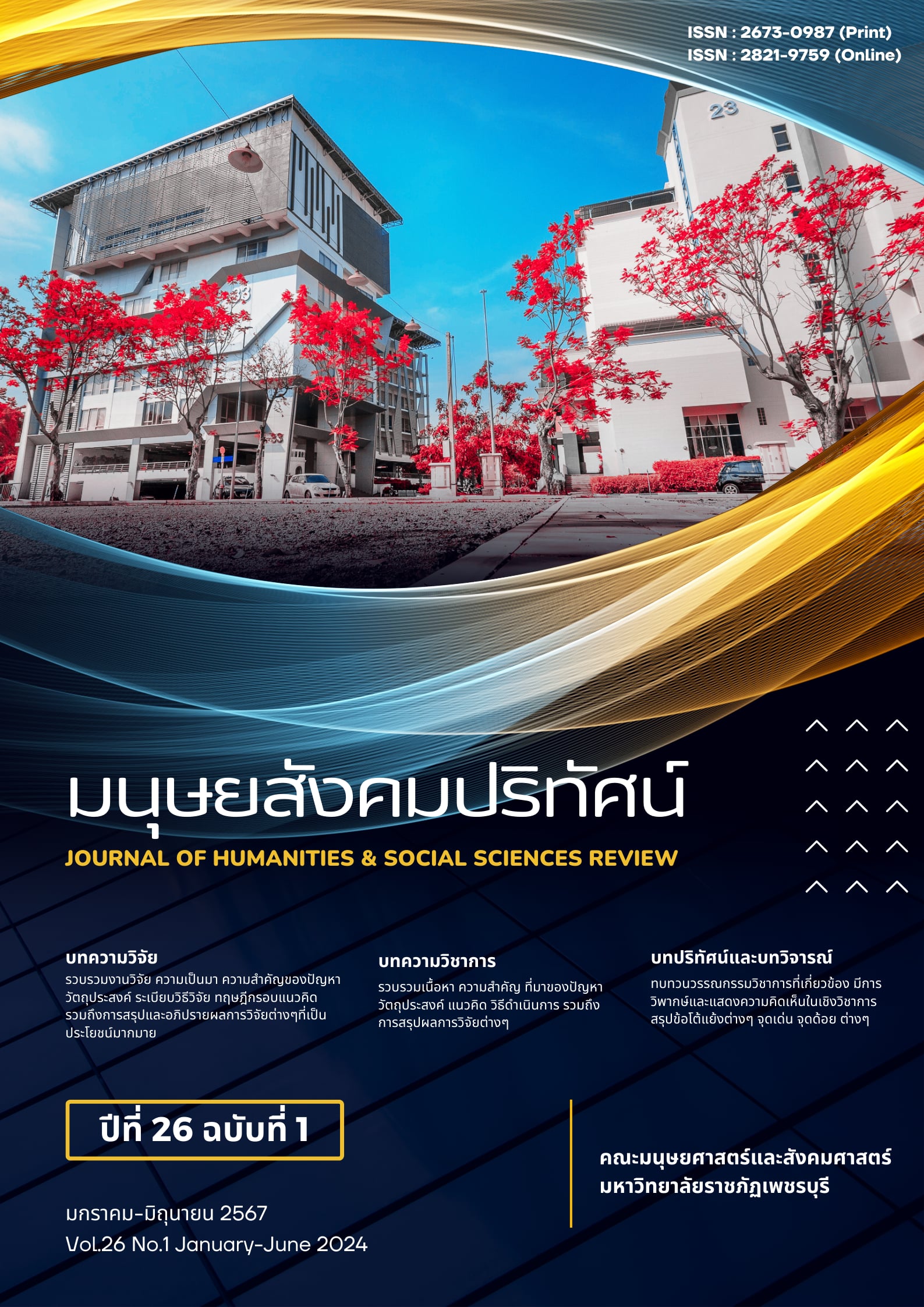The development of the practice of playing the Gong Wong Yai to promote the ability to read notes playing the Gong Wong Yai and building discipline in training of Mathayomsuksa 4 students at Phetchaburi Rajabhat University Demonstration School, Phetch
Main Article Content
Abstract
The objectives of this research were: 1) to develop and determine the efficiency of the skill exercises for playing the Gong Wong Yai for Mathayomsuksa 4 students at Phetchaburi Rajabhat University Demonstration School in Phetchaburi Province; 2) to study the ability to read notes before and after using the skill exercises for playing the Gong Wong Yai for Mathayomsuksa 4 students at Phetchaburi Rajabhat University Demonstration School in Phetchaburi Province; and 3) to study the characteristics of discipline in the training of Mathayomsuksa 4 students at Phetchaburi Rajabhat University Demonstration School in the second semester of the academic year 2020. 35 students were selected by purposive sampling. The instruments used in this study were the skill exercises of playing the Gong Wong Yai, achievement tests, four lesson plans based on the skill exercises of playing the Gong Wong Yai, a note reading ability assessment, and a practice discipline assessment form. The statistics used for analyzing the data were mean, standard deviation (S.D.), E1/E2, and percentage. The research results could be summarized as follows: 1) The efficiency of the skill learning of playing the Gong Wong Yai of students in Mathayomsuksa 4 at Phetchaburi Rajabhat University Demonstration School was equal to 82.75/83.00; 2) the comparative results of learning achievement in the skill of playing the Gong Wong Yai before and after learning of students in Mathayomsuksa 4 at the Demonstration School of Phetchaburi Rajabhat University were that after studying, the average score was 47.80, representing 95.60 percent, and before learning received an average score of 34.60, representing 69.20 percent, with an average progression of 13.20, representing 26.40 percent. The ability to read notes for Mathayomsuksa 4 students at Phetchaburi Rajabhat University Demonstration School that learned by using skill training was found to be higher after learning than before learning. Before learning, the average score was 19.60, representing 65.33 percent, and after learning, the average score was 26.10, representing 87.00 percent, with an average progression of 6.50, representing 21.67 percent. 3) The assessment result of the characteristics of disciplined practice in Mathayomsuksa 4 students at Phetchaburi Rajabhat University Demonstration School who learned by using the instrumental skills of Gong Wong Yai had an average score of 4.40 (S.D.= 0.632), which was at a high level.
Article Details
1. Any views and comments in the article are the authors’ views. The editorial board has not to agree with those views and it is not considered as the editorial board’s responsibility. In case, there is any lawsuit about copyright infringement, it is considered as the authors’ sole responsibility.
2. The article copyright belonging to Faculty of Humanities and Social Sciences, Phetchaburi Rajabhat University are copyrighted legally. Republication must be received direct permission from the authors and Phetchaburi Rajabhat University in written form.
References
เฉลิมศักดิ์ พิกุลศรี. (2543). สังคีตนิยมว่าด้วยดนตรีไทย. กรุงเทพฯ: โอเดียนสโตร์.
ณรุทธ์ สุทธจิตต์. (2538). กิจกรรมดนตรีสำหรับครู. กรุงเทพฯ: จุฬาลงกรณ์มหาวิทยาลัย.
ธิติ ปัญญาอินทร์. (2553). การจัดการเรียนการสอนทฤษฎีดนตรีสากลของครูผู้สอนดนตรีในโรงเรียนมัธยมจังหวัดบุรีรัมย์. วิจัยทุนสนับสนุน. บุรีรัมย์: มหาวิทยาลัยราชภัฏบุรีรัมย์.
วิไลพร ภูมิเขตร์. (2560). การพัฒนาทักษะการเป่าขลุ่ยเพียงออโดยใช้กระบวนการปฏิบัติประกอบแบบฝึกทักษะ. วิทยานิพนธ์ปริญญาครุศาสตรมหาบัณฑิต มหาวิทยาลัยราชภัฏมหาสารคาม.
สำนักงานคณะกรรมการการศึกษาขั้นพื้นฐาน กระทรวงศึกษาธิการ. (2551). หลักสูตรแกนกลางการศึกษาขั้นพื้นฐาน พุทธศักราช 2551 กลุ่มสาระการเรียนรู้ศิลปะ. กรุงเทพฯ: กระทรวงศึกษาธิการ.
สุกรี เจริญสุข. (2542). คู่มือการอบรมครูซูซูกิและการเป็นครูซูซูกิชั้นต้น. นครปฐม : วิทยาลัยดุริยางคศิลป์ มหาวิทยาลัยมหิดล.


